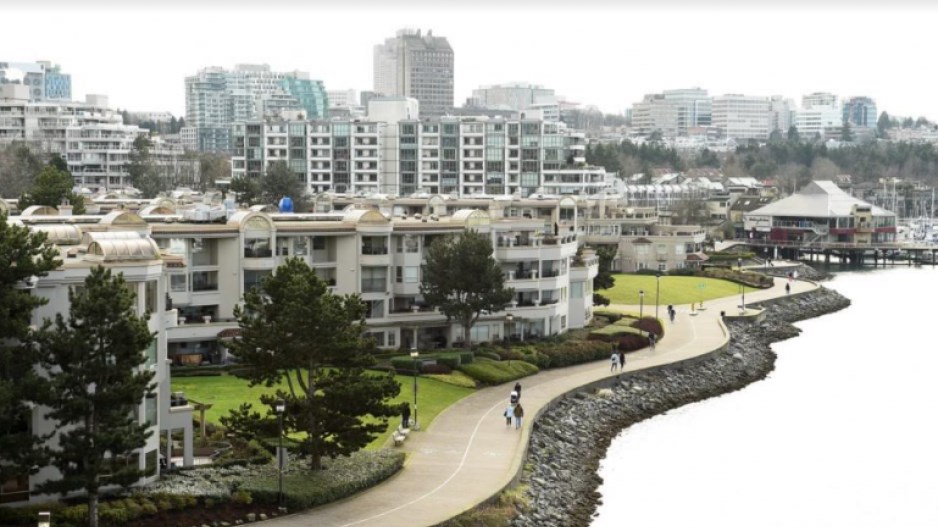The City of Vancouver launched a public feedback campaign Monday that could lead to redevelopment of some of the 80 acres of land it owns between the Cambie and Burrard street bridges on the south shore of False Creek.
Currently, there are approximately 1,800 homes — both market and non-market housing — on leased lands known as False Creek South which are owned and managed by the city. Most of the 60-year leases expire in the next 15 to 25 years.
“The purpose of this engagement is to explore the future of these lands, for the next 50 years and beyond, while striving to balance the interests of current neighbourhood residents with those of all Vancouver residents who own this land,” the city said in documents released Monday to launch its month-long campaign.
The city said findings of the campaign will aim to give leaseholders and tenants “clarity” about the future of the land. The False Creek South Neighbourhood Association has asked for clarity for at least a decade, according to its website.
The neighbourhood association created what it called a “RePlan” committee in 2010 to work with the city on developing new lease options to preserve the community beyond lease expiry.
Glacier Media was unable to reach a spokesperson from the association before deadline but its website outlines the frustration residents have had with the city.
“Existing affordable housing is eroding and new community growth is stalled because the landlord [the City of Vancouver] isn’t addressing the urgent issue of security of tenure for the 6,000 residents who live on leased land in False Creek South,” the website said. “All aspects of the community are being impacted — from the ability to finance the cost of housing and major renovations to community growth and planning.”
The association said city council has the ability to protect the existing variety of affordable, mixed-income housing options in False Creek South, “to eliminate the threat of housing insecurity on leased city land,” to kick start community growth and to create right-sized housing in the neighbourhood.
“But they haven’t — and the issue has been dragging on for years despite eight years of council motions to resolve it,” the website said. “False Creek South as a housing experiment has worked! It’s up to the city to act now.”
Whatever the end result with leases, the city noted council approved a policy in 2018 that “seeks to support current residents through any changes to city-owned lands, such as by minimizing displacement, providing alternate housing options and providing advance notice and transparency.”
The city said one of the guiding principles for long-term planning of False Creek South is to maintain housing that is affordable for diverse groups of people, including options for current residents.
The public feedback campaign comes as Vancouver continues to grapple with a housing crisis, which has been amplified by the pandemic and further exposed the city’s homelessness issue and affordability problem.
The city said some of the False Creek land could be used to help address the housing crisis. Housing types could include purpose-built rental buildings, family housing with two or more bedrooms, seniors housing and so-called “workforce housing” for people on low to moderate incomes who work in the city.
Townhouses, duplexes, fourplexes, “cottage courts” and multi-family apartment buildings that fill the gap between single-family homes and higher density apartments could be considered. More co-ops and social housing, along with “accessible and adaptable housing” and housing for Indigenous people could be in the mix.
Currently, the neighbourhood has six co-ops, four market-rental buildings, six nonprofit buildings and 13 stratas.
False Creek South, which was transformed in the 1970s and 1980s from industrial land into primarily a residential neighbourhood, has a population of 5,597 residents. Median age of residents is 54.3 and median household income is $78,176, with 13 per cent of the population considered low-income.
While there has been new housing built and proposed around False Creek in the past two to three decades, no new housing has been built in the False Creek South neighbourhood since the 1980s.
The city’s future plan also aims to make the neighbourhood more diverse and equitable, with only 17 per cent of its current population represented by visible minorities, whereas Vancouver as a whole is at 52 per cent.
“Compared to Vancouver’s population overall, the median age of those living in False Creek South is higher than the city’s average, median household income in False Creek South is also higher than the average, the number of families with children is lower, and the proportion of those who identify as a visible minority is lower,” the city said.
Addressing climate change and the city’s economy are also other considerations in any future redevelopment of the land.
The portion of city land excludes Granville Island and Senakw, the property under and around the Burrard Bridge owned by the Squamish Nation. The rest of the land in the area is either privately owned or owned by other levels of government.
More information on the city’s public feedback exercise can be viewed at ShapeYourCity.ca/FCSLands.
@Howellings




